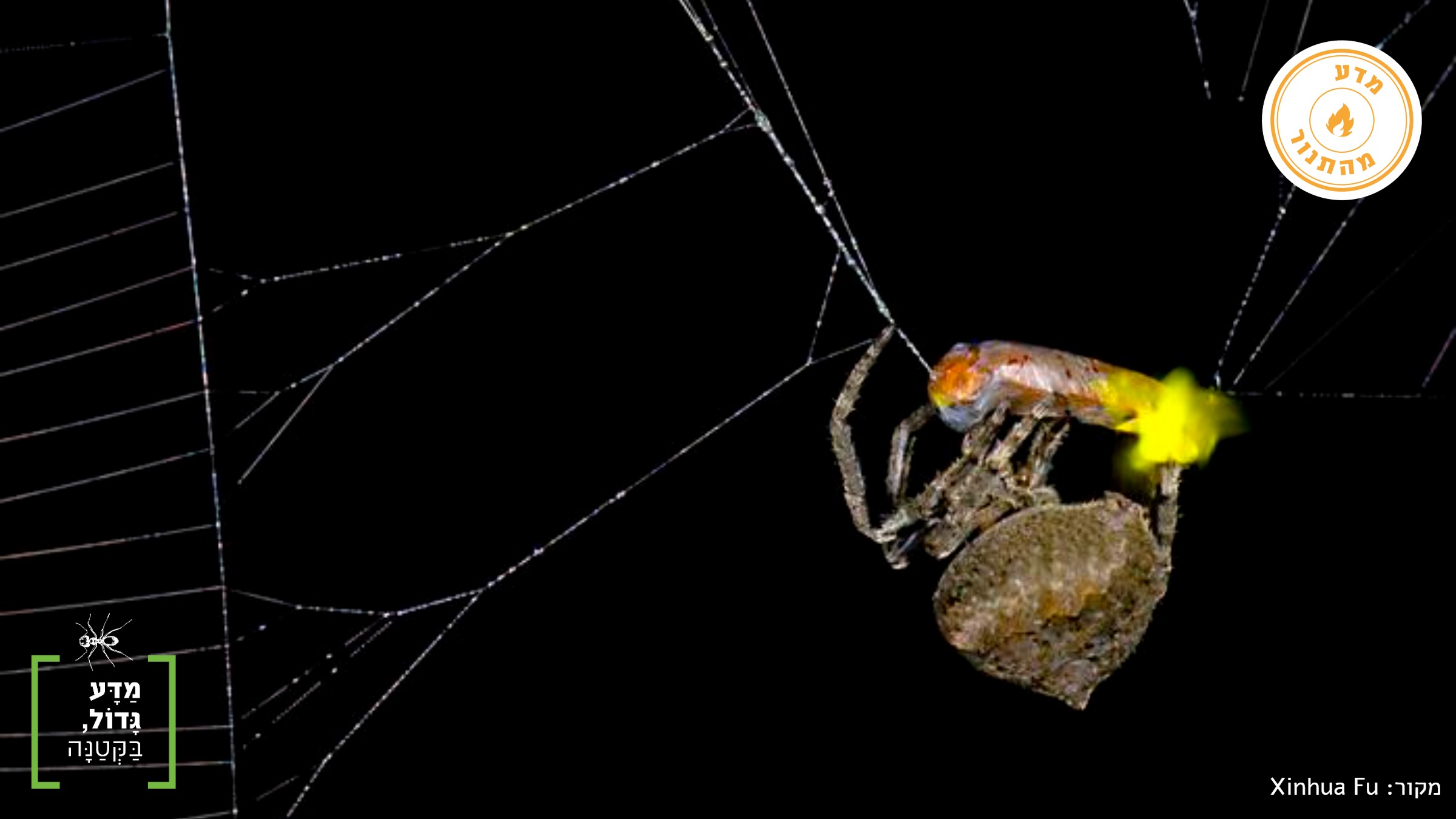Flashing Drag Show of Fireflies
02/03/2025

When male fireflies are caught in the web of a spider from the orb-weaver family, they suddenly begin to flash like female fireflies. Additional males, noticing the enticing signal, fly happily toward the "females" in anticipation of mating, but instead—they too fall prey into the spider's web.
Spiders employ a variety of diverse and sometimes surprising predatory strategies. For some spiders, an invisible, sticky web to capture their prey is sufficient. Other crafty ones, such as certain jumping spiders, stage themselves as injured prey, on another spider’s web. By the time that the spider host realizes the hoax, he is already devoured by the hoaxer. Some spiders camouflage themselves by mimicking their surroundings—for instance, crab spiders that use bodily color patterns resembling flowers or leaves, or those that can even change their body color in response to their environment. In this article, we will reveal a new behavior observed in orb-weaver spiders, which hints at a somewhat different—and even somewhat peculiar—predatory strategy. One thing is certain: what we know now is only the tip of the iceberg.
Spiders of the orb-weaver family (Araneidae) weave a wheel-shaped web. Our orb-weaver spider (Araneus ventricosus) is common in Japan and East Asia. It is active at night and tends to build vertical webs from the ground up.
We first kindly refer the readers to our previous article on fireflies [1]. Let us recall that both sexes—that is, the male and the female—are capable of controlling the on and off “switch” of the “light” at the tip of their abdomen, and that each sex typically exhibits a distinct flashing pattern to help them find each other in the dark and mate. And this is the case with the firefly species in the study we describe here [2].
The male firefly of the species Abscondita terminalis uses two lights at the tip of its abdomen, which emit a sequence of flashing pulses, whereas the female uses a single light that flashes in a single pulse. The interesting observation that caught the researchers’ attention and led them to initiate the study was that many male fireflies—and hardly any females—were caught in our spider’s web, which piqued their curiosity.
The researchers conducted a field study on 161 webs of A. ventricosus that were randomly assigned into four groups; in some webs there was a spider and in others there was not. In addition, in some webs a male firefly whose light was covered with dark ink—so that its flash was almost completely hidden from view—was placed, while in others a male firefly capable of flashing normally was used.
It was found that male fireflies were captured more frequently in webs that contained a spider with a male firefly capable of flashing. The size of the spider, the height of the hunting web, or its geometric shape did not affect the capture rate of male fireflies in the webs. Furthermore, it was observed that when a male firefly was caught in webs where the spider was present, it was seen flashing from only one light and with a single pulse flashing pattern- similar to that of the female [3-4].
The findings suggest that the spider may somehow cause the male fireflies caught in its web to mimic the flashing pattern of the females—that is, to imitate the fireflies’ "language of love" and lure additional tasty males into the web. Naturally, you might now ask: why doesn’t the spider allow the males to flash normally and attract females onto its web? Why exert the effort to make the males flash like females in order to lure additional males?
Well, although both the males and the females of this firefly species are capable of flight, when it comes to finding love, it is the males who fly toward the females, while the flashing females mostly wait stationary [5].
Or, our spider simply prefers male suitors. We remain open minded and accepting…
It is important to note that the study consisted solely of behavioral observations, and the mechanism—if it exists—is unknown. In other words, it is not known if and how the spider causes the captured male fireflies to change their flashing pattern. The researchers hypothesized that perhaps a specific biting pattern of the spider underlies the mechanism, since the researchers observed that aside from these male fireflies, no other prey of the spider was bitten in such a unique pattern. Another hypothesis is that the spider’s venom, injected with its bite, causes the male fireflies to change their flashing pattern. To find out, further research is required.
However, we are serious scientists who also happened to want to travel to China, so we set our sights on the rice fields of Hubei province and turned to spiders to find out: how do they do it? We received a unanimous response from all: two fireflies on the web are preferable to one firefly in hand.
*In the picture: An orb-weaver spider (A. ventricosus) tending to a captured male firefly (A. terminalis) on its web.
Sources:







